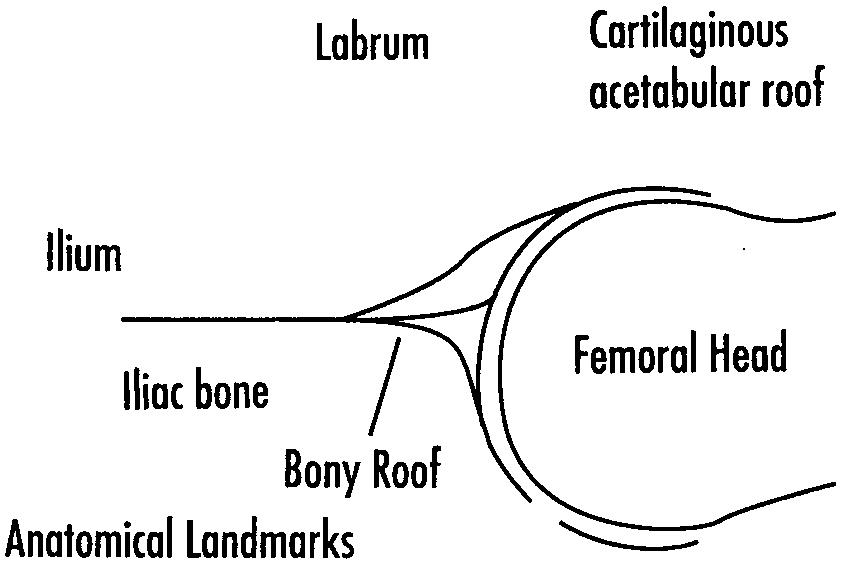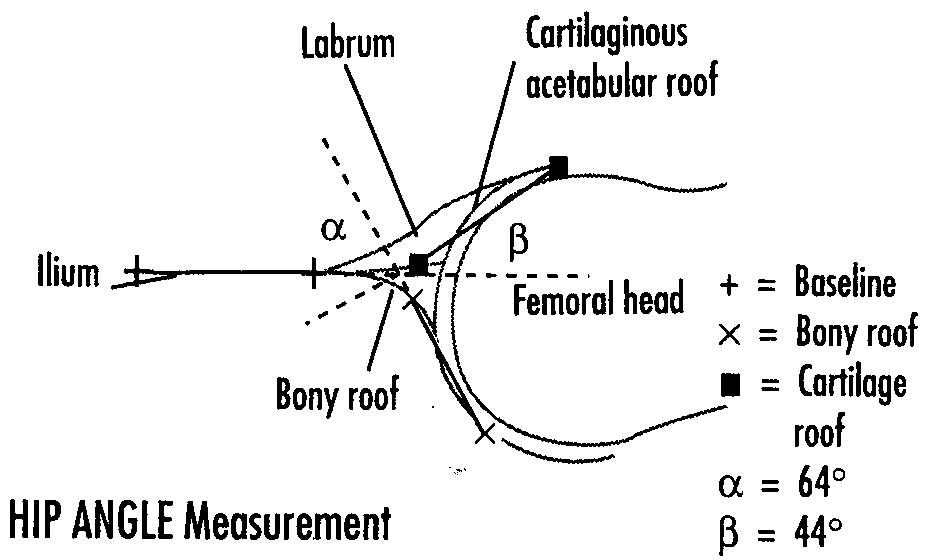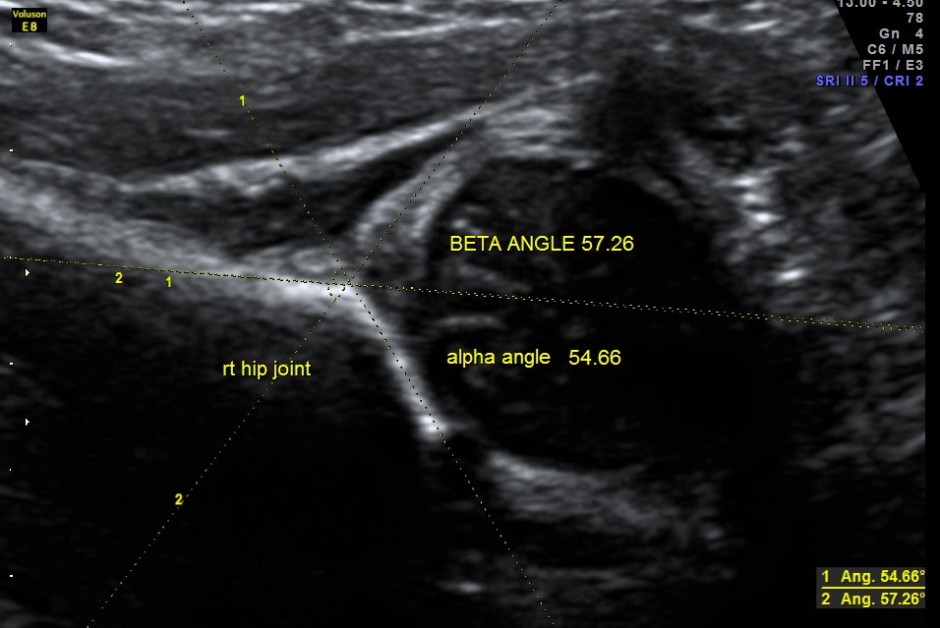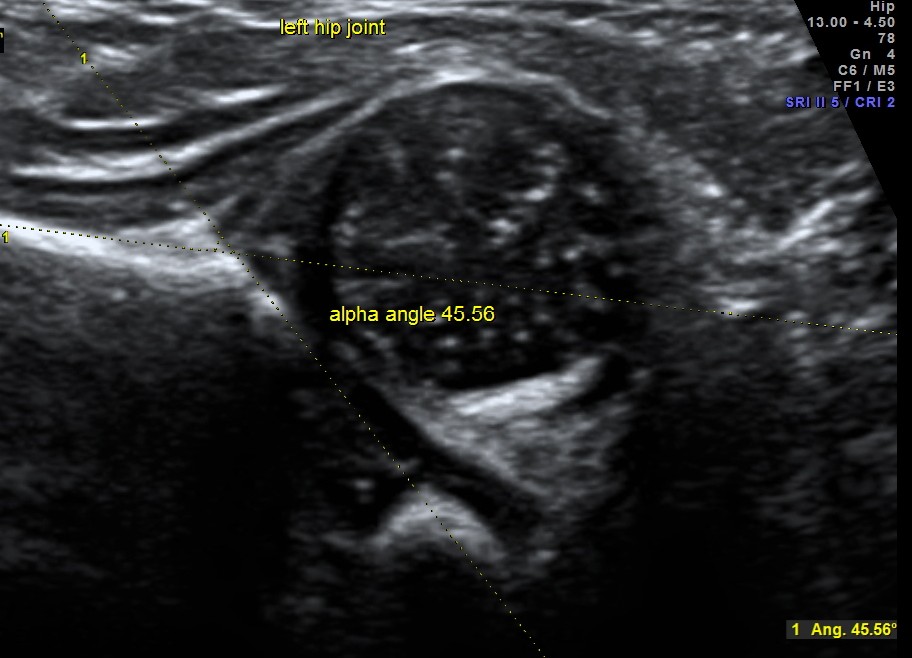This was a 10 day old infant not moving the left lower limb with tenderness on left hip movement passively . Clinical suspicion was developmental dysplasia of hip and was referred for a scan .
please visit the following site for good line diagrams.
http://bonepit.com/Reference/Neonatal%20hip%20Ultrasound.htm
The following images were secured .
This was diagnosed as type II C of Graf
the next picture is the normal right hip for comparison
Kindly visit the following link for a brief info on Graf classification ;
http://radiopaedia.org/articles/ultrasound-classification-of-ddh .
Graf proposed an ultrasound classification system for infant hips (see Developmental Dysplasia of the Hip (DDH) ) combining both alpha and beta angles. There are a number of additional subdivisions, which are often not used clinically.
As a general rule, the alpha angle determines the type and in some instances the beta angle is used to determine subtype.
- type I : alpha angle > 60 degrees (normal)
- type Ia : beta angle < 55 degrees
- type Ib : beta angle > 55 degrees
- type II
- type IIa : alpha angle 50 – 59 degrees
- type IIb : alpha angle 50 – 59 degrees
- type IIc
- alpha angle 43 – 49 degrees
- beta angle < 77 degrees
- type D (“about to decenter”)
- alpha angle 43 – 49 degrees
- beta angle > 77 degrees
- type III : alpha angle < 43 degrees
- type IIIa and IIIb distinguished on the grounds of structural alteration of the cartilaginous roof
- type IV
- alpha angle < 43 degrees
- dislocated with labrum interposed between femoral head and acetabulum
http://www.ncbi.nlm.nih.gov/pmc/articles/PMC2903126/
In the Graf method, with the infant in a lateral decubitus position, coronal images of the hip joint are obtained, and α and β angles are measured. Mature hips are defined as those having an α angle of 60 degrees or greater, and are classified as types Ia or Ib, depending on the β angle. Hips with an α angle of 50 to 59 degrees are defined as immature, and are classified as types IIa or IIb, depending on the infant’s age. Hips with an α angle of 49 degrees or less are defined as having pathological development, and are classified as types IIc, D, IIIa, IIIb, or IV
If evidence of instability is present, a Pavlik harness should be considered and, if used, fitted appropriately







Excellent post! In my practice we use the Graf method exclusively. Things have come a long way since my B-scan days. Your examples here are fantastic.
LikeLike
Thanks
LikeLike
Great delivery. Great arguments. Keep up the
amazing spirit.
LikeLike
I feel this is among the most significant information for me.
And i’m happy studying your article. But want to commentary on few common issues, The website taste is perfect, the articles is actually excellent : D. Excellent task, cheers
LikeLike
Thanks
LikeLike
Does your website have a contact page? I’m having a tough time locating it but, I’d like to send you an e-mail.
I’ve got some suggestions for your blog you might be interested in hearing. Either way, great site and I look forward to seeing it expand over time.
LikeLike
Please be free to give your suggestions
LikeLike
katespade 時計 リボン 開店記念セール!http://www.paulsmithmalljp.com/katespadecheap.html
goro’s ネックレス http://fashionjewelry.dennisbake.com/goros/
LikeLike
Thank you a bunch for sharing this with all folks you actually
know what you’re speaking approximately! Bookmarked.
Please also talk over with my web site =). We may have a hyperlink trade arrangement among
us
LikeLike
great article, i have benefited from it , simplified my work
LikeLike
Thanks Dr
LikeLike